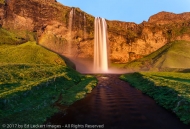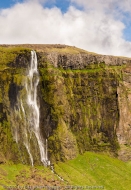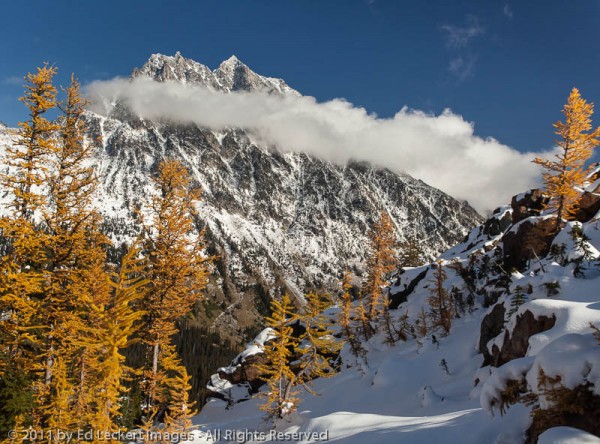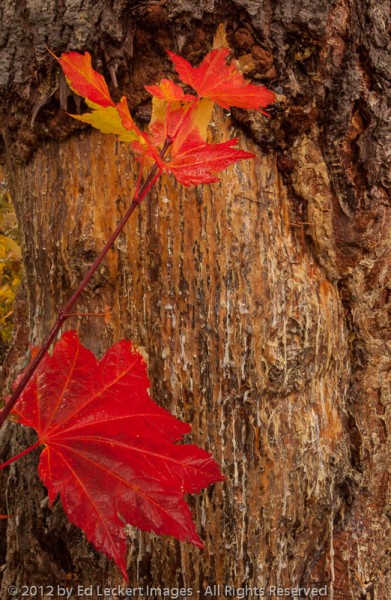


Autumn is coming, like it or not! And I happen to like it, because some of the best opportunities for nature photography present themselves in the fall. As I prepare for my New England fall foliage trip, I thought this would be a good time for a fall color retrospective from past years.
I’ve never done a fall foliage shoot in New England or anywhere else east of the Rockies, for that matter. But I have shot fall color in the Pacific Northwest, mostly right here in Washington State and in British Columbia in Canada. And while we might not have the hardwoods in the large numbers that New England is famous for, what we have here is the amazing larch trees (a deciduous conifer if you can believe that) and some stunning landscapes for them to grow in.

A hiking trail leads through a copse of turning larch trees down to a lake, in the Alpine Lakes Wilderness, Washington.
Of the several types of larches in the world, the ones I’ve run into out here in the Pacific Northwest are the Western Larch (Larix occidentalis) and the Alpine Larch (Larix lyallii). You can tell them apart by asking a nearby botanist to help you. No, actually the Western Larch is the larger of the two, often reaching 30 to 60 metres (98 to 197 ft) high because it doesn’t like to live life on the edge like the Alpine Larch. Since the Alpine Larch prefers higher altitudes (1,800 to 2,400 m, or 5,900 to 7,900 ft) and more rugged terrain, it leads a more stressful life and tends to be on the small side. But it’s a tough little guy, often living for a very long time. In fact, the record is supposedly held by a little fellow in Kananaskis, Alberta at 1,917 years as of 2012. I’m not sure if they cut it down just to figure this out.

Mount Stuart is encircled in clouds as larches turn yellow for autumn, in the Alpine Lakes Wilderness, Washington.

Vine maple leaves turn fiery red in early autumn, in Mt. Baker-Snoqualmie National Forest, Washington.
But we have more for fall color than just larches out here. In fact, we have a maple all our own, the Vine Maple (Acer circinatum) which is native to western North America. And although the sap of all maples is edible, I’d stick to the eastern version for my maple syrup if I were you.
And while we’re on the subject, their leaves become poisonous as they get older, so just enjoy the view and please don’t try to eat the darned things!
So enjoy the last remnants of summer, if there are any left, and cheer up. Remember that autumn brings its own special treats, not the least of which is the colorful shows it puts on around the world. And with any luck, in a few weeks I’ll be back with a small taste of New England color to show you!
